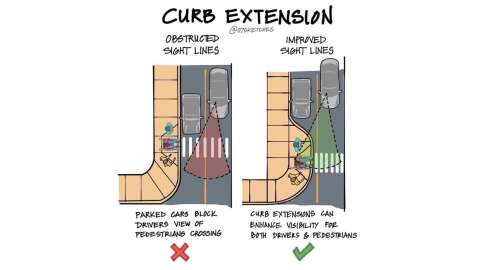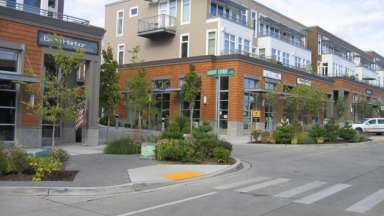Walking and biking in the city is likely to become safer and easier. Recent updates to development rules mean better crosswalks and more pedestrian passages. Those are wide, vehicle-free paths designed for walking, biking, and rolling.
Encouraging non-car travel can also have a positive impact on the environment and quality of life.
Every year, more than 7,000 pedestrians are killed in crashes in the U.S., according to the Governors Highway Safety Association. An important way to reduce that number is to enhance pedestrian safety through infrastructure.
Safer, More Comfortable Crosswalks
The recent text changes will lead to the creation of safer and more comfortable crosswalks. This involves reducing crosswalk distances and slowing cars at intersections.
More – and Safer – Pedestrian Passages
A pedestrian passage is a place for people walking, biking, or using other non-car travel. The recent changes, which will be adopted into the City's Unified Development Ordinance, amend the rules to improve the safety of these paths through design. It also allows pedestrian passages to substitute for streets in more situations than before. This encourages building them.
“These changes give people who don’t drive more options, and make getting around Raleigh safer,” says Planning Manager Justin Rametta.

Crosswalk safety: Recent changes can lead to improved pedestrian safety by shortening the distance to cross and slowing vehicles at intersections. View larger image
Sustainability and Social Impact
The largest source of greenhouse gas emissions in Raleigh is transportation. Fifty-two percent of Raleigh’s community greenhouse gas emissions come from transportation.
The City’s Community Climate Action Plan addresses this. The recent updates to development rules are designed to:
- Help reduce greenhouse gas emissions
- Encourage fewer vehicle miles
- Improve access, safety, and comfort for people walking and biking
The City’s Office of Sustainability, Planning and Development, and Transportation departments continue to identify ways to improve the community’s quality of life.
